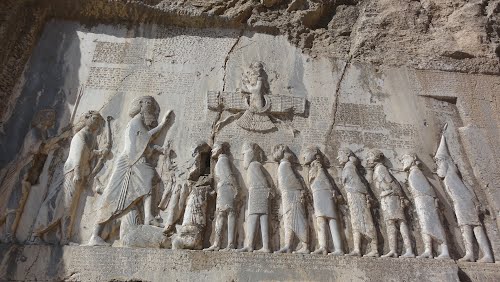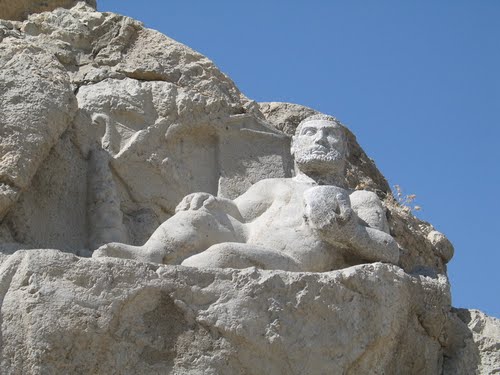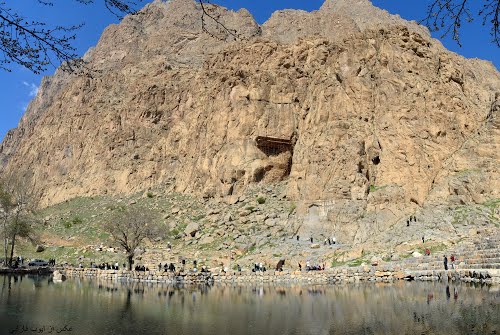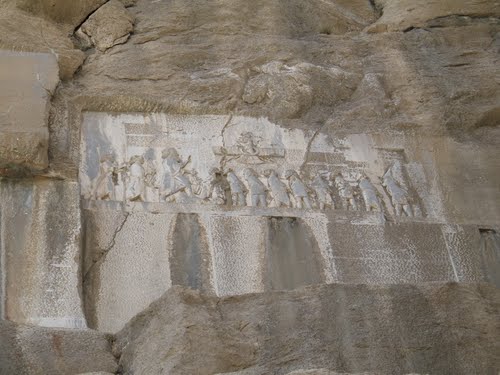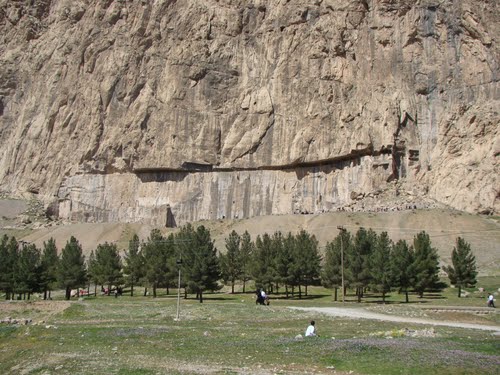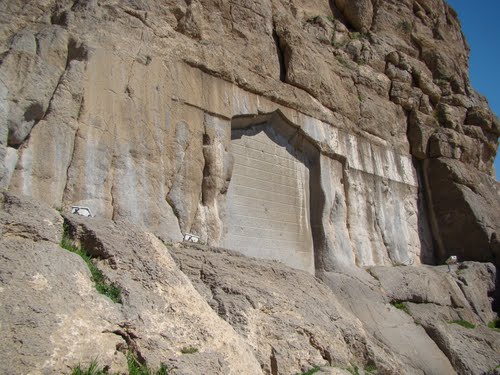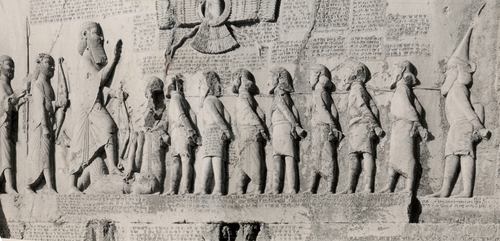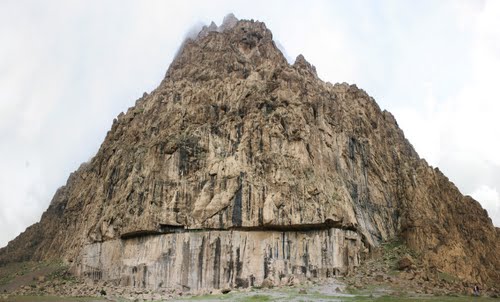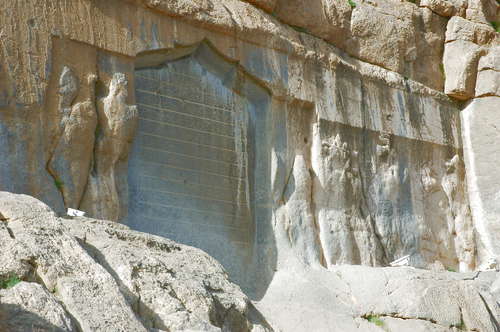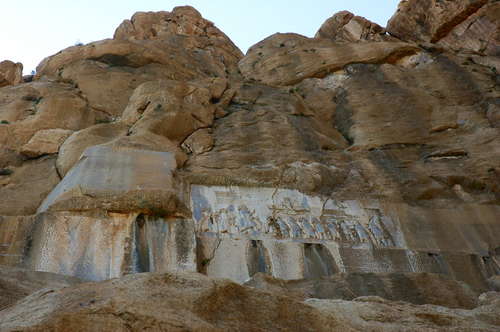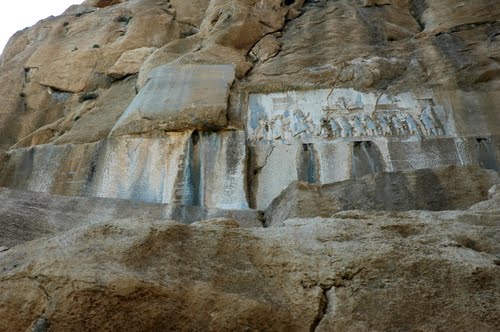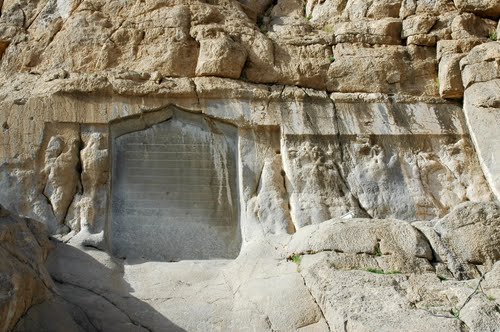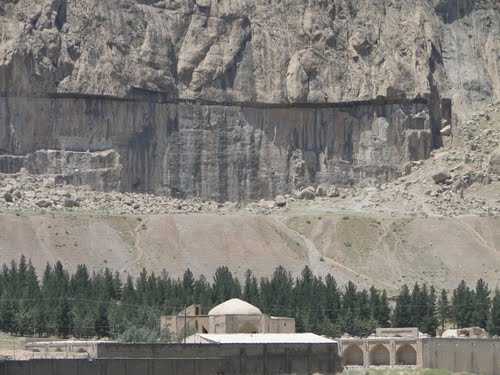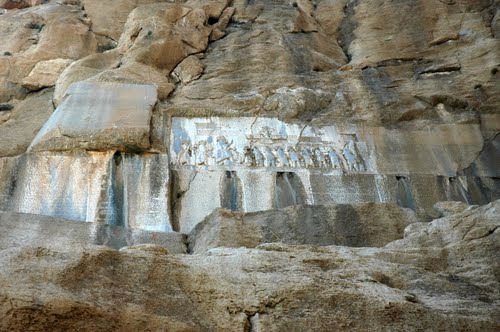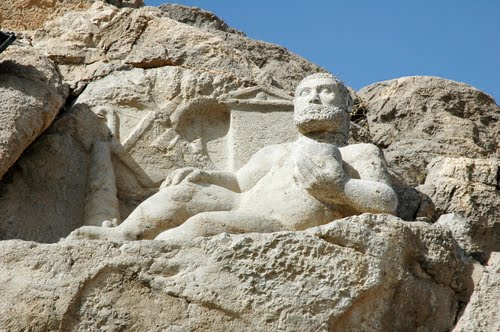The Behistun Inscription is a multilingual inscription and large rock relief on a cliff at Mount Behistun in the Kermanshah Province of Iran, near the city of Kermanshah in western Iran. It was crucial to the decipherment of cuneiform script.
Authored by Darius the Great sometime between his coronation as king of the Persian Empire in the summer of 522 BC and his death in autumn of 486 BC, the inscription begins with a brief autobiography of Darius, including his ancestry and lineage. Later in the inscription, Darius provides a lengthy sequence of events following the deaths of Cyrus the Great and Cambyses II in which he fought nineteen battles in a period of one year (ending in December 521 BC) to put down multiple rebellions throughout the Persian Empire. The inscription states in detail that the rebellions, which had resulted from the deaths of Cyrus the Great and his son Cambyses II, were orchestrated by several impostors and their co-conspirators in various cities throughout the empire, each of whom falsely proclaimed kinghood during the upheaval following Cyrus's death.
Darius the Great proclaimed himself victorious in all battles during the period of upheaval, attributing his success to the "grace of Ahura Mazda".
The inscription includes three versions of the same text, written in three different cuneiform script languages: Old Persian, Elamite, and Babylonian. The inscription is to cuneiform what the Rosetta Stone is to Egyptian hieroglyphs: the document most crucial in the decipherment of a previously lost script.
The inscription is approximately 15 metres high by 25 metres wide and 100 metres up a limestone cliff from an ancient road connecting the capitals of Babylonia and Media. The Old Persian text contains 414 lines in five columns, the Elamite text includes 593 lines in eight columns, and the Babylonian text is in 112 lines. The inscription was illustrated by a life-sized bas-relief of Darius I, the Great, holding a bow as a sign of kingship, with his left foot on the chest of a figure lying on his back before him. The supine figure is reputed to be the pretender Gaumata. Darius is attended to the left by two servants, and nine one-meter figures stand to the right, with hands tied and rope around their necks, representing conquered peoples. Faravahar floats above, giving his blessing to the king. One figure appears to have been added after the others were completed, as was Darius's beard, which is a separate block of stone attached with iron pins and lead.
History
After the fall of the Persian Empire's Achaemenid Dynasty and its successors, and the lapse of Old Persian cuneiform writing into disuse, the nature of the inscription was forgotten, and fanciful explanations became the norm. For centuries, instead of being attributed to Darius I, the Great, it was believed to be from the reign of Khosrau II of Persia — one of the last Sassanid kings, who lived over 1000 years after the time of Darius I.
The inscription is mentioned by Ctesias of Cnidus, who noted its existence some time around 400 BC and mentioned a well and a garden beneath the inscription. He incorrectly concluded that the inscription had been dedicated "by Queen Semiramis of Babylon to Zeus". Tacitus also mentions it and includes a description of some of the long-lost ancillary monuments at the base of the cliff, including an altar to "Herakles". What has been recovered of them, including a statue dedicated in 148 BC, is consistent with Tacitus's description. Diodorus also writes of "Bagistanon" and claims it was inscribed by Semiramis.
A legend began around Mount Behistun (Bisotun), as written about by the Persian poet and writer Ferdowsi in his Shahnameh (Book of Kings) c. 1000, about a man named Farhad, who was a lover of King Khosrow's wife, Shirin. The legend states that, exiled for his transgression, Farhad was given the task of cutting away the mountain to find wate, if he succeeded, he would be given permission to marry Shirin. After many years and the removal of half the mountain, he did find water, but was informed by Khosrow that Shirin had died. He went mad, threw his axe down the hill, kissed the ground and died. It is told in the book of Khosrow and Shirin that his axe was made out of a pomegranate tree, and, where he threw the axe, a pomegranate tree grew with fruit that would cure the ill. Shirin was not dead, according to the story, and mourned upon hearing the news.

